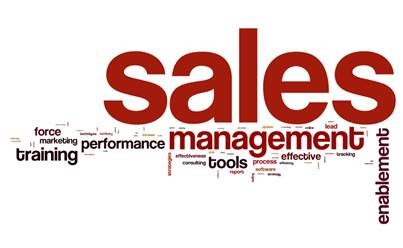
28 Feb 7 Steps to Selling
The 7 Steps of Selling
By Randall Walker, Entrepreneurship Facilitator
For many people selling is something that pushes their comfort zone, especially cold calling a prospective customer and trying to secure a sale. Selling, whether it be for products or services, is nevertheless a necessary part of a successful business. An entrepreneur must be aware of the concept of best practice selling. A very simple approach to either follow yourself or use to develop a Sales Strategy for your team is to understand these 7 Steps of Selling
1. Prospecting & Qualifying
2. Pre-Approach
3. Approach
4. Presentation
5. Handling Objections
6. Close
7. Follow-up
The most critical aspect of selling is converting an enquiry or lead into a sale. Your Conversion Rate is an excellent objective measure or Key Performance Indicator (KPI). Conversion Rate is the percentage of enquiries or leads that convert to a sale. For example, if your sales staff receive 80 incoming sales calls or emails a week and generate 40 sales, that is a Conversion Rate of 50%. If you send out a special offer communication to 1,000 email contacts and it generates 30 responses, which your team then handles, resulting in 20 sales, you can say that the 20 sales from the 30 responses represents a Conversion Rate of 66%. Extracting that financial transaction (sale) is the ultimate measure of success. There are many things you can do to give your business the best chance of achieving an optimal Conversion Rate. It is a great way to assess staff performance. Before you implement a new Sales Strategy establish what your current Conversion Rate is, as a benchmark or starting position. You must record every call or email and walk-in customer as an enquiry/lead – and don’t be distressed if the current Conversion Rate is low, less than 50%. Then after implementing your new Sales Strategy, with staff training possibly including a suggested script or checklist, keep tracking the Conversion Rate, and hopefully see it improve steadily over time.
Prospecting & Qualifying
Identify what type of customer or client is most likely to need or want your products or services. Then you can cost-effectively target your sales and marketing efforts, and not waste funds reaching unlikely prospects.
Pre-Approach
Before making contact with a prospective customer or client make an effort to get the spelling of their name and business correct. Attention to detail is an important, highly respected, measure of professionalism and makes an excellent positive first impression. To get a persons name or business name wrong creates an immediate negative first impression. If the client is a business, make sure you conduct some quick desktop research to understand the nature of the business, core products/services, locations they operate from and perhaps learn their core values. Only then can you start to explore how your products/services may represent an alignment with their products and services and brand.
Approach
Decision makers in businesses are very busy and difficult to secure a meeting with. It is important that your approach is succinct and attention grabbing. I recommend always having a Valid Business Reason (VBR) when requesting a meeting. For example, “Could I please meet with you for 20 minutes to explain how I believe our product/service can assist you to reduce your costs/increase profit?” This type of approach will often get you that precious ‘foot in the door’. Try to find out who the decision maker is, and to value your time, request to meet with the decision maker.
Presentation
The sales presentation (pitch) is of course super important. It must be succinct and get to the point very quickly – what product/service are you offering + what is the price + explain the quality and benefits. If your presentation is in PowerPoint, the client will always ask for a copy, so make sure you either have a copy on a USB that you can leave, or email the presentation straight after the meeting (with a few tweaks if important matters came up during the meeting). Always have a couple of copies of “handouts”, 2 slides to a page, printed in case there is a technology failure (so you can still proceed). Importantly, take a risk and propose a solution (based on your research) with pricing. You must provide enough information to extract either an initial yes or no to the sale. The reason 7 days/6 nights all inclusive holidays are so popular as a sales promotion, is because the customer knows exactly what they are going to get for what price, and it becomes easy to decide yes or no. It is better to get a no than to be left wondering.
Handling Objections
This is the most critical stage of the 7 Steps. You must have the courage to ask towards the end of your presentation, if the response seems positive – “If you don’t mind me asking, what would stop you from placing an order today?” This is your best and only chance of flushing out any reservations or hesitation (objections) the client may have, that you would otherwise not have known. Your prompting may uncover a concern such as “We have been with our current supplier for five years and I’m unsure how we would go about changing suppliers.” You then have an opportunity in the meeting to overcome what would have been a potential barrier to the sale. For example, you can allay their concerns immediately as your best chance of securing a sale “We can sign a Supplier Agreement and be ready to deliver from next week, however if you would prefer to give your current supplier two weeks, or one month’s notice, that’s fine we can start delivering then. They will understand. Its a standard business process to change suppliers when you act in the best interests of your business and your customers.”
Close
Many sales efforts are lost because the meeting is not brought to a helpful close. Use the goodwill of the meeting/presentation to seek confirmation of a follow-up date. “Would it be OK with you if I call you next Wednesday at 10am to see what your response is?” This is extremely helpful because in effect an appointment has been set for you to follow up and extract a yes or a no, as opposed to continually following up and not being able to get through to the decision maker. The client will feel obliged to accept your phone call or respond to your email.
Follow-up
Make sure as part of conveying a professional image you follow up promptly and always call or email when you say you will. People still want to do business with people they like and trust. Do not avoid, or forget, to follow up. The best outcome for you in terms of effective time management is to get a yes or no as quickly as possible, and then move on to the next prospect.
